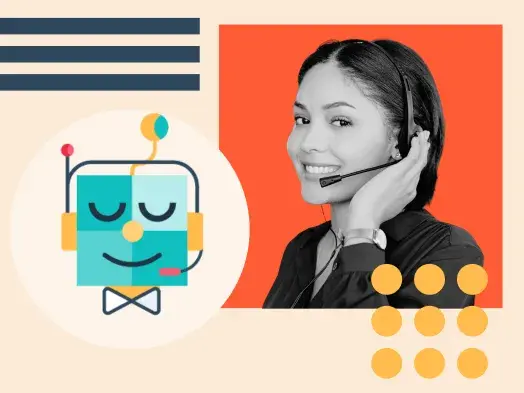According to HubSpot’s State of AI survey, customer service professionals save around two hours a day using artificial intelligence. AI automates call centers, enhances chatbots, and makes it easier for service personnel to locate information.
But, incorporating AI into your service team’s workflow can feel a little intimidating. There’s always a new tool being released and it’s hard to keep track of which ones are useful. Not to mention, learning how to operate each new tool and figuring out where it fits in your team’s workflow.
In this post, we’ll simplify things and explain how companies are currently using AI for customer service. We’ll go over a few best practices and provide examples of real companies taking advantage of AI.
Table of Contents
- How to Use AI for Customer Service
- Companies Using AI for Customer Service
- Best Practices for Using AI in Customer Service
Download Now: The Annual State of Artificial Intelligence in 2025 [Free Report]
How to Use AI for Customer Service
When it comes to customer service, companies use AI to enhance the customer experience and enrich brand interactions. Instead of spending all of their time responding to client queries, service personnel have more flexibility to focus on activities that truly require human-to-human interaction.
According to Gitnux, 80% of CEOs either already use conversational AI to manage client engagement or plan to start doing so. This is likely because over 40% of shoppers don’t care if they talk to AI or a real person as long as their questions are answered quickly.
Additionally, collecting and analyzing large data volumes enables businesses to better understand user needs and provide personalized experiences. This positively impacts engagement and creates meaningful interactions for customers.
Let’s now see AI in action. Below are five companies that are using AI to improve the customer experience.
5 Companies Using AI for Customer Service
1. KFC
KFC is a great example of a brand that uses AI to offer a personalized shopping experience. It collaborated with the Chinese search engine company, Baidu, to develop facial-recognition technology that can predict what a customer will order.
The system can suggest different menu items based on the person’s estimated age and mood. For example, a 20-year-old male could be offered a meal with a crispy chicken sandwich, roasted chicken wings, and coke. A 50-year-old female might be offered porridge and soybean milk for breakfast.
This not only speeds up the ordering process but also provides a high level of personalization that many customers enjoy.

What we love: It’s a super innovative solution and the right target audience to try it out with. China’s consumers are highly digitized (especially in big cities like Beijing or Shanghai) and appreciate speed and personalization.
2. Macy’s
When you’re shopping in a big department store, it’s sometimes difficult to find an associate who can help you. That’s why Macy’s has turned to cognitive AI technology to help its clients navigate its stores and locate associates in a much faster way.
Introduced as “Macy’s on Call,” this smartphone-based assistant can provide personalized answers to customer queries. It can tell you where products or brands are located or what services and facilities are available in each store.
This gives human assistants more time to deal with issues that call for in-person attention or to answer questions that are too complex for AI to answer.

What we love: Macy’s on Call resolves customer queries fast and without any human involvement. This makes the shopping experience much more pleasant. It also enhances brand presence as the customer is required to download the Macy’s app to use the service.
3. AirHelp
AirHelp has assisted over 16 million passengers experiencing canceled, overbooked, or delayed flights. As a leader in the traveler claims category, it’s always received a high volume of queries.
Customers reach out using multiple communication channels, including the brand’s social media profiles. This makes it difficult to gather and prioritize tickets at scale.
To counteract this, the company implemented an AI solution that collects requests and automatically assigns them to the right service agents.
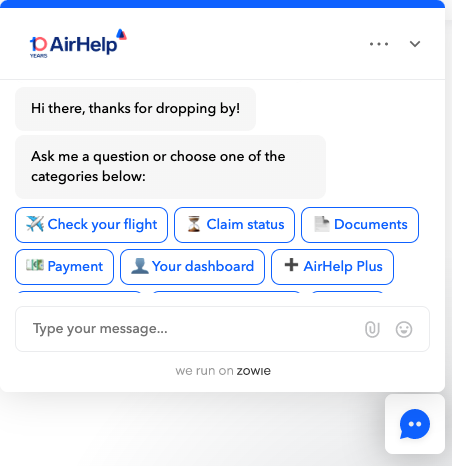
The AirHelp chatbot acts as the first point of contact for customers, improving the average response time by up to 65%. It also monitors all of the company’s social channels (in 16 different languages) and alerts customer service if it detects crisis-prone terms used on social profiles.
What we love: Most AirHelp customers are stressed out with their flight operator and expect immediate help. AI is a perfect solution as it lets the brand handle and assign queries to agents as soon as they appear in the queue.
4. Axis Bank
Axis Bank is a great example of how voice AI can prevent call center traffic jams by helping clients help themselves. The bank lets customers use their Alexa devices for a number of requests, which traditionally fell to human agents.
These tasks include:
- Asking for account balance and credit card bills
- Blocking credit cards
- Ordering checkbooks
- Reviewing transaction history
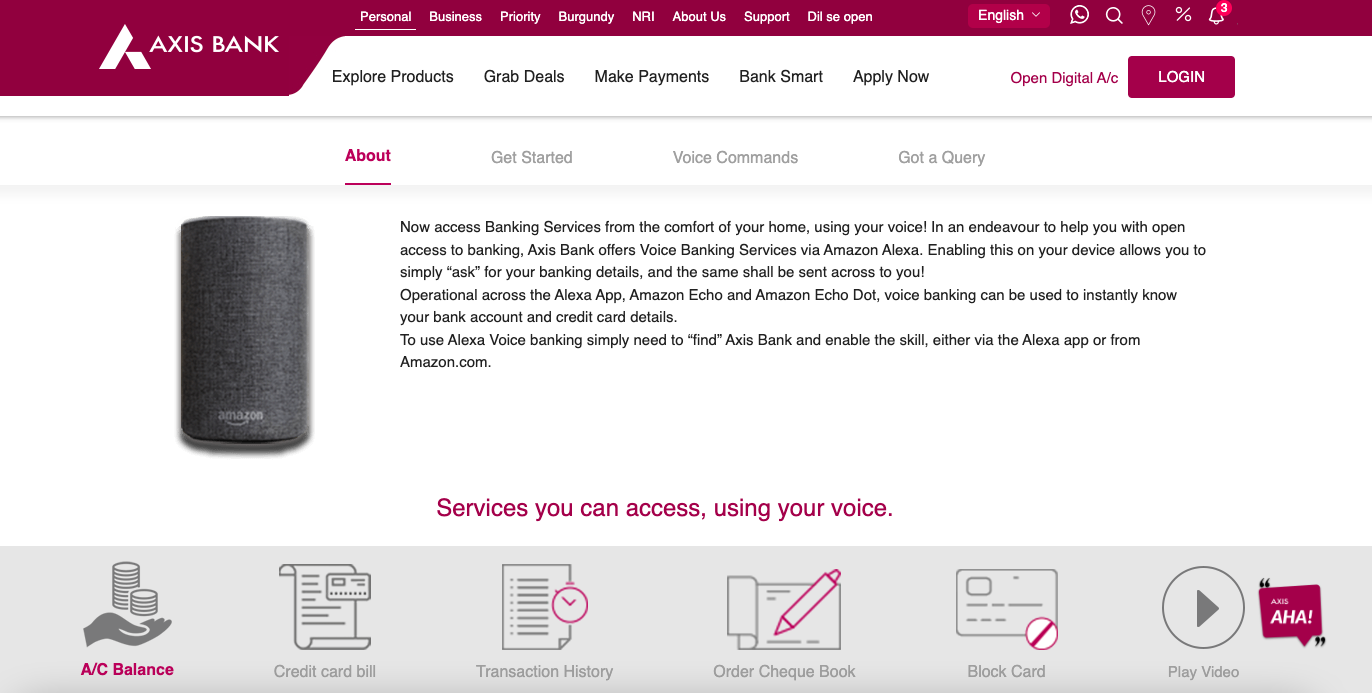
What we love: Axis Bank found a great way to save service personnel from repetitive questions and topics, while also giving customers a way to quickly and conveniently resolve issues on their own.
5. ING
ING has been using conversational AI in the banking field since 2017. It started with piloting its first chatbot, Lionel, which was quickly followed by Marie, and, finally, Inge.
What made these solutions different from others? ING implemented them on Meta’s Messenger, making it easy for customers to receive help without having to log into their banking accounts.
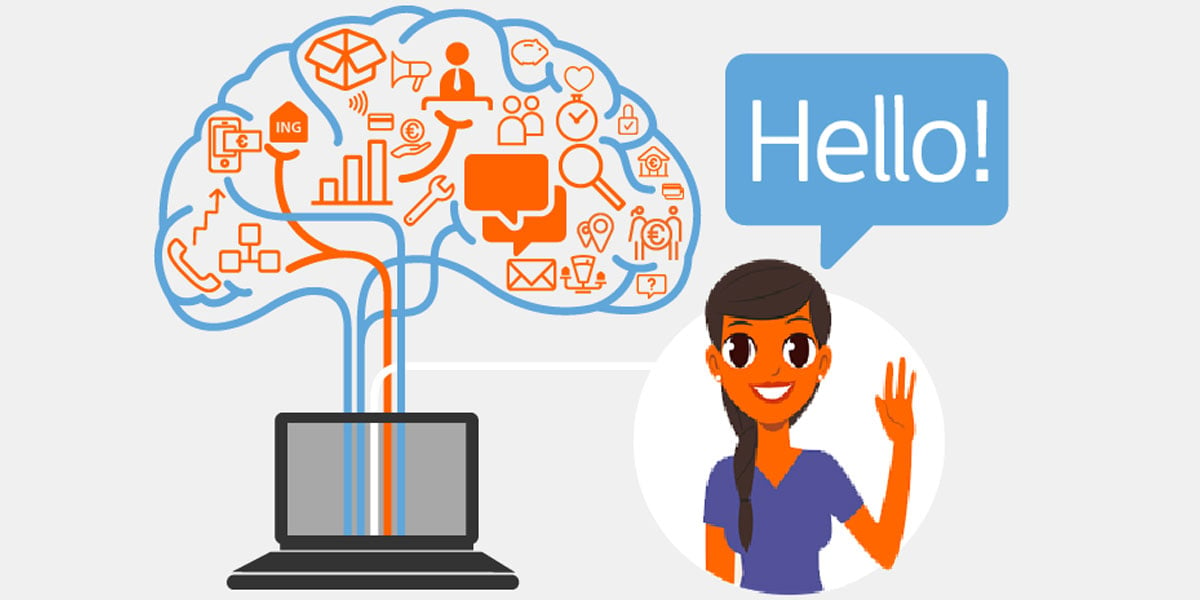
Peter Netusil, part of ING’s Machine Learning team, said that bots operating on third-party tools offer “a cheaper-to-operate but expected level of customer service.” This keeps customers satisfied with the quality of service and leads to higher client retention.
What we love: By using Meta’s messenger service, ING significantly increases its bot’s accessibility. This means that simple tasks like making a deposit, checking a balance, or answering an FAQ can be completed without the assistance of a human agent. When you’re working with banking hours, it’s nice to know you can contact your bank even on the weekends.
Now that we’ve reviewed some companies that are using AI, let’s talk about how you can implement it on your customer service team.
Best Practices for Using AI in Customer Service
1. Treat AI as support, not a human replacement.
Companies using AI for customer service should turn to it to optimize customer service – not to completely eliminate humans from the equation.
Start by identifying areas that could benefit from automation, like answering client queries. This calls for speed and people don’t mind interacting with a chatbot as long as their issues get resolved fast.
Before you automate everything, remember there are certain situations that should be dealt with by humans. For instance, when there is an upset customer who is threatening to churn. There are a lot of emotions involved, and while AI can efficiently tackle simple queries, it’s unable to show empathy. In this scenario, the customer will expect to speak with a human agent, not a robot.
Customer service should use AI to deal with mundane, repetitive tasks. This will leave more time to focus on strategic or creative activities that can’t be performed by robots (at least not yet).
With HubSpot’s free chatbot builder software, you can create messenger bots without having to code. You’re provided with a catalog of ready-made templates that give you a head start on creating any type of chatbot you need. It’s easy to install on a website or social media page, so you can be up and running in no time.
2. Use AI to reduce wait times.
We’ve all been in a situation where we need to get an issue resolved ASAP – and it’s the worst when you get an automatic message saying that the wait time is over an hour.
It’s even more frustrating when it’s a simple question or task, like paying a bill or checking a balance. These tasks can now be handled by an AI system that responds to numbers and audio prompts. Customers simply tell the AI what they want to accomplish and the bot completes the request.
This not only reduces the number of calls in the queue, but it also creates a seamless customer experience. Customers will simple requests are engaged with immediately, while those with more complex issues are met with a human response. And, if the AI can’t resolve the issue, it can redirect the call to a service agent who can.
3. Have AI automate customer communication.
Customer service departments can automate more than just conversations happening between customers and bots. They can also ask AI to assist them with sending follow-ups, drafting emails, and accessing data from the CRM.
ChatSpot is a great example. It’s an AI bot that you can connect with your CRM to perform tasks, like writing messages, or drawing information, like your latest Net Promoter Score results. This can come in handy when you communicate with a single client or a larger customer segment.
4. Set alerts to spot potential crises.
Most AI solutions come with natural language processing (NLP) capabilities. This means that they can detect a change in a client's behavior or in their emotions. What’s more, some AI-powered tools can send you an alert if a customer says something that indicates that they might churn.
When using AI, be sure to set up an alert that notifies your service team if a customer is unhappy with your bot. If your chatbot has sentiment analysis capabilities, use it to gauge how frustrated a customer is and when your team should intervene.
Leveling Up With AI & Customer Service
AI will continue to be a hot topic in business as companies start adopting these tools and reaping their benefits. Earlier users will be better positioned to adapt over time and will have a firmer understanding of which tools they should use and how they can grow their business.
Your customer service team is no exception and shouldn’t be overlooked as you integrate AI. Use it to optimize your customer journey and provide excellent service to each of your customers.
Artificial Intelligence


.png?height=613&width=1920)
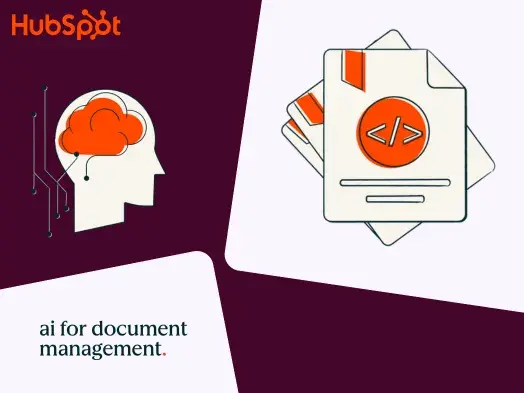
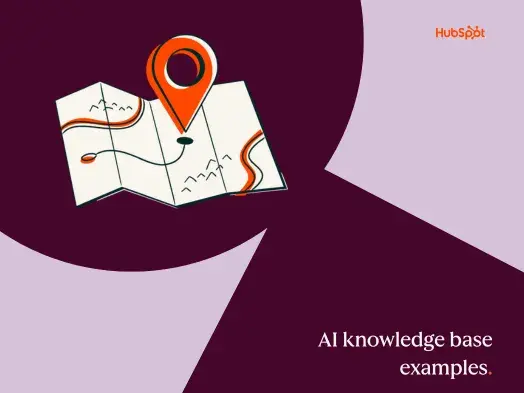
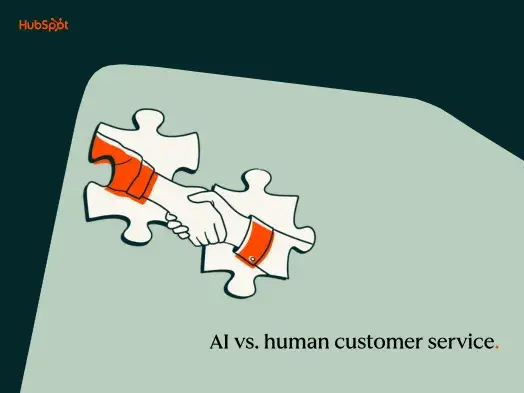

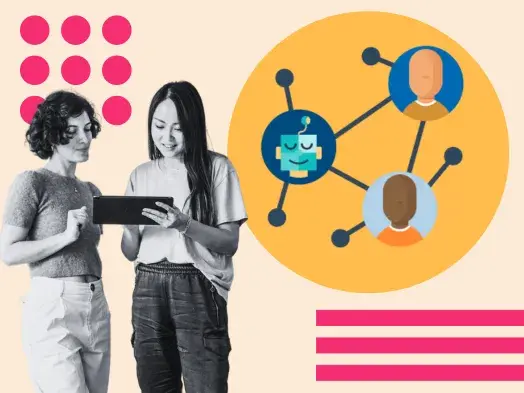
![How AI Can Unlock Customer Insights [+Expert Tips]](https://53.fs1.hubspotusercontent-na1.net/hubfs/53/customer-insights-ai-1-20241101-2082956.webp)
